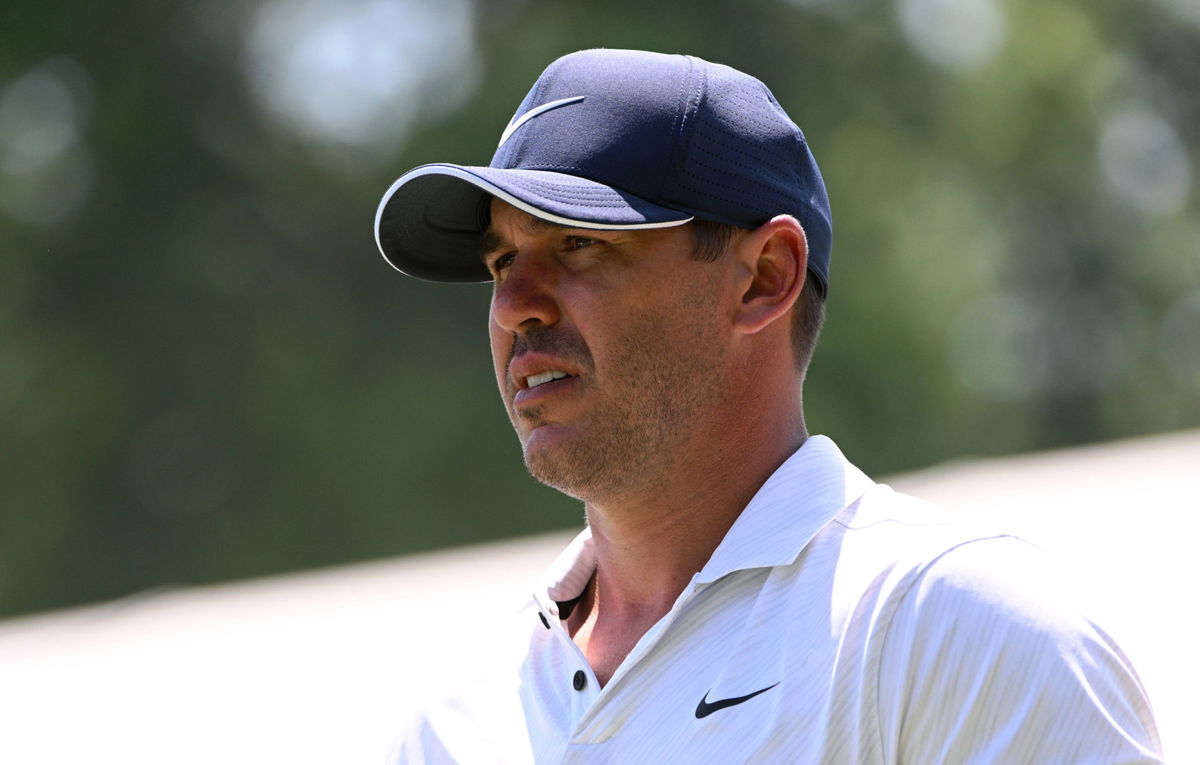
USA Today via Reuters
PGA, Golf Herren PGA Championship – First Round, May 19, 2022 Tulsa, Oklahoma, USA Brooks Koepka looks on during the first round of the PGA Championship golf tournament. Mandatory Credit: Orlando Ramirez-USA TODAY Sports, 19.05.2022 14:44:15, 18304397, Brooks Koepka, NPStrans, PGA Championship, First Round, PGA PUBLICATIONxINxGERxSUIxAUTxONLY Copyright: xOrlandoxRamirezx 18304397

USA Today via Reuters
PGA, Golf Herren PGA Championship – First Round, May 19, 2022 Tulsa, Oklahoma, USA Brooks Koepka looks on during the first round of the PGA Championship golf tournament. Mandatory Credit: Orlando Ramirez-USA TODAY Sports, 19.05.2022 14:44:15, 18304397, Brooks Koepka, NPStrans, PGA Championship, First Round, PGA PUBLICATIONxINxGERxSUIxAUTxONLY Copyright: xOrlandoxRamirezx 18304397
In a world where most LIV Golf headlines already revolve around eye-popping paychecks and superstar signings, recent news of prize money going up even higher might leave many scratching their heads. Not because of the amount—LIV Golf has shelled out far more for stars like Brooks Koepka and Jon Rahm—but because this time, not a cent is going to the athletes. On the surface, it appears to be another player’s payday boost, but behind the scenes, this eye-catching move is less about rewarding talent and more about shuffling money into their own pockets. Still confused?
Watch What’s Trending Now!
The mystery didn’t go unsolved for long. It all started when Sports Business Journal shared a rather ambitious move that is set to be taken up by LIV Golf. “LIV’s current weekly purse of $25M will go to $30M in 2026, according to four sources familiar with the process, and the extra capital will go toward the league’s weekly team competition,” Josh Carpenter’s report from July 27 stated. Meaning? What happens currently is $5 million dollar of the weekly tournament purses are handed out to teams ($3 million to the winners, $1.5 million to second place and $500,000 to third place), while the “remaining $20M covers the individual stroke play portion”. However, with the latest increase, “the extra $5M will be spread out among all 13 teams based on finishing position”. So far, so good, right?
Well, Golf & Sports Law Attorney John Nucci decided he’d add to the conversation with an expected comparison. Responding to Carpenter sharing this article on X, he wrote, “LIV is doubling down and leaning into the team concept, with the extra $5 million in purses going toward team finishes. The existence of the team concept remains the biggest disconnect between PGA Tour and LIV leadership.” And he’s not wrong, isn’t it? Hold on, because Golf Week columnist Eamon Lynch also had quite the revelation.
ADVERTISEMENT
Approximately two hours later, he responded, “Most team prize money isn’t paid to players but rather goes to the team operating budget to meet costs. Since teams are 75% owned by LIV, they’re basically transferring money from one LIV account to another.” Rather than enriching players, the majority of the funds are being funneled into team operating budgets, covering travel, logistics, and staff. Since LIV Golf owns 75% of every team, the money never truly leaves its hands.
Most team prize money isn’t paid to players but rather goes to the team operating budget to meet costs. Since teams are 75% owned by LIV, they’re basically transferring money from one LIV account to another. https://t.co/LNr3GpK2lz
— Eamon Lynch (@eamonlynch) July 28, 2025
Whether this gamble pays off or backfires, one thing is clear—LIV isn’t just chasing relevance on the course; it’s negotiating, and structuring, and, when needed, buying its way in. Meanwhile…
ADVERTISEMENT
Top Stories
Fans Rally Behind Justin Thomas for Donating $1M to Alabama Golf

Golf Fans’ Reaction to Malbon’s Bold Fred Couples Decision Is Hardly Surprising

Scottie Scheffler Makes Critical Health Announcement After He Ended PGA Tour Hiatus

Golf Fan Hit by Hollywood Celebrity’s Golf Ball Sparks Crowd Frenzy

PGA of America Issues Urgent Plea as Golf Courses Face Water Crisis That Cancelled PGA Tour Event

LIV Golf stars are not happy about missing the biggest stages
For LIV Golf players, prize money was never the problem. But now, their access to the sport’s biggest stages is. As their world rankings plummet, the reality has become clear—no matter how much they earn on LIV, they risk missing the majors. Only two LIV players—Bryson DeChambeau and Tyrrell Hatton—currently sit inside the top 50 of the OWGR. The rest depend on scattered invites, major performances, or international appearances to stay afloat.
ADVERTISEMENT
That instability is already showing. Dustin Johnson, a former World No. 1, dropped as low as 907th before climbing back to 571 after a single solid finish. Lee Westwood’s T-34 at The Open sent him soaring 3,759 spots to 930, just ahead of his son on the mini-tour. “I think that just proves that without world ranking points, it makes a bit of a mockery of the system,” Westwood said bluntly before LIV’s London event.
While the league has reapplied for OWGR recognition and is confident, approval is far from certain. “We either start to get world ranking points on LIV,” Westwood added, “or the majors will have to revise their qualification systems—which I don’t think anybody wants.” Hatton echoed that worry. “There’s a lot of guys out here whose world ranking doesn’t reflect who they really are,” he said. And DeChambeau remains cautiously optimistic: “We just have to keep working on it.”
But until the system changes, or LIV wins inclusion, players chasing legacy may find themselves locked out of the only four tournaments that define it.
ADVERTISEMENT
ADVERTISEMENT
ADVERTISEMENT
ADVERTISEMENT

